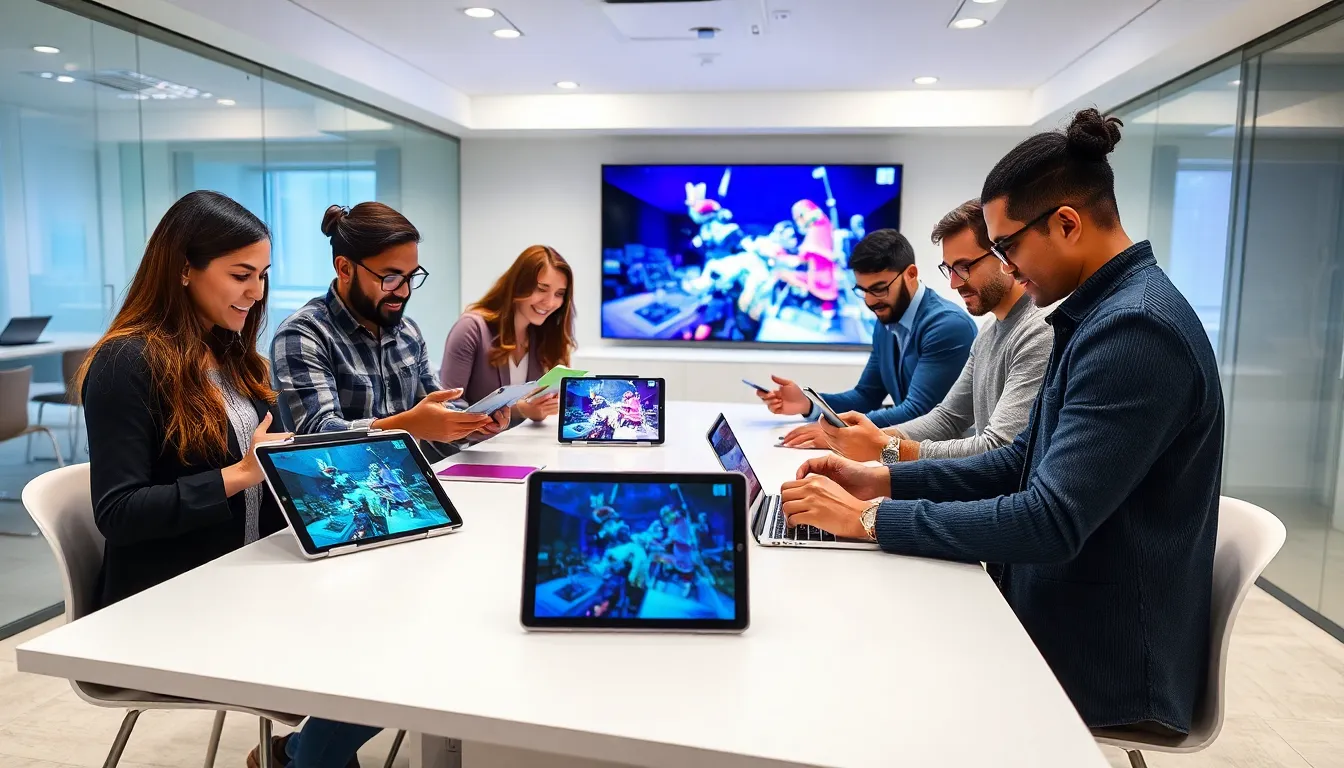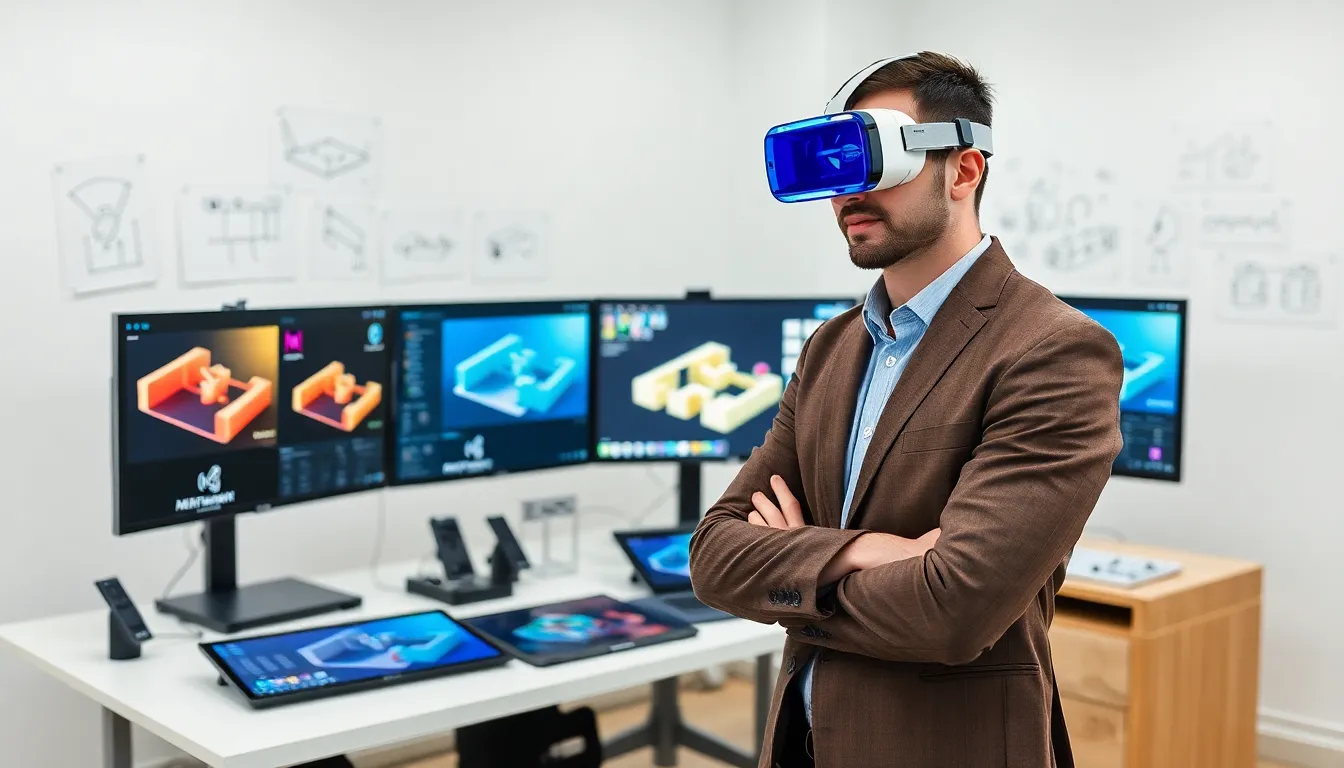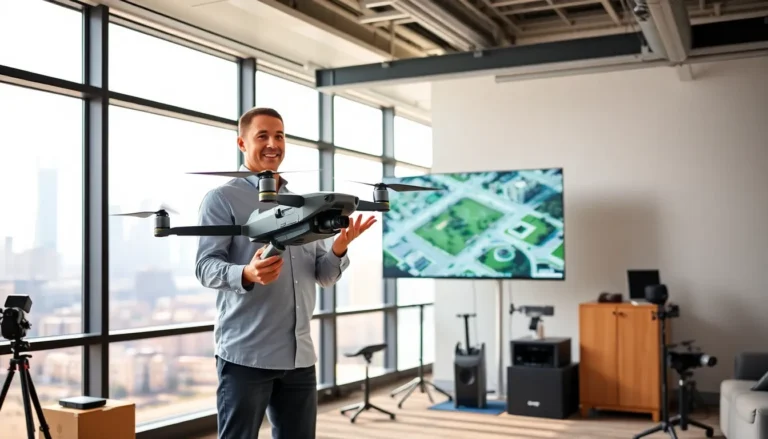Ever wondered who makes the magic happen in augmented reality? That’s right. The heroes behind those mind-blowing AR experiences are augmented reality designers. Imagine blending the physical world with bursts of digital color, interactive elements, and a sprinkle of imagination. It’s like tech meets art, and they threw a wild party. This blog will explore what these designers do, the skills they need, and how they navigate this fascinating landscape. Let’s jump into the world of augmented reality and see what it takes to craft new realities.
Table of Contents
ToggleThe Role of Augmented Reality Designers

Augmented reality designers are the masterminds behind merging the real world with digital content. They breathe life into concepts through visuals that engage and inform users. These professionals envision how digital layers interact with the physical surroundings, ensuring experiences feel seamless and intuitive.
Every day, they collaborate with developers, artists, and other creative minds to create interactive applications for various industries. Whether enhancing shopping experiences, revolutionizing gaming, or transforming education, the reach of AR extends beyond entertainment. Such designers play crucial roles in defining user interactions and shaping the overall aesthetic, ensuring that every pixel contributes to an immersive experience.
Their work often involves conceptualizing and prototyping, taking ideas from initial sketches to fully operational applications. They not only focus on how something looks but also how it feels, all while considering the user’s journey through this layered digital reality. So, the next time you’re in awe of an AR app, remember: there’s a designer who turned that idea into an engaging, interactive experience.
Key Skills and Qualifications
To become an augmented reality designer, a unique blend of skills and qualifications is essential. First and foremost, a solid foundation in design principles, such as color theory, typography, and layout, is crucial. Familiarity with user experience (UX) design enhances a designer’s ability to craft intuitive AR experiences.
Technical skills in 3D modeling software like Blender, Maya, or Unity are often sought after. Proficiency in programming languages, such as C# or JavaScript, allows designers to build more interactive and responsive applications. Also, understanding how augmented reality integrates with various platforms like mobile devices or AR glasses can set a designer apart in the competitive landscape.
Effective communication and collaboration skills are also vital. Designers liaise with developers and clients, making it important to convey ideas clearly and concisely. Also, keeping abreast of the latest trends and technologies in the AR space is paramount. Continuous learning ensures that designers remain relevant and equipped to innovate in this rapidly evolving field.
While formal education can be beneficial, real-world experience, such as internships or personal projects, can speak volumes. A robust portfolio showcasing a designer’s creative process and finished products often tells potential employers more than a diploma ever could.
Tools and Technologies Used
Augmented reality designers wield a variety of tools to bring their visions to life. Software like Unity and Unreal Engine serves as the backbone for many AR applications, providing a platform for creating both simple and complex interactions. These engines help the integration of 3D models, animations, and real-time rendering, allowing designers to manipulate every aspect of the user experience.
In terms of design software, Adobe Creative Suite is invaluable for crafting the visual components of AR experiences. Designers often rely on programs like Photoshop and Illustrator to create assets that capture attention and blend seamlessly into the environment.
Also, AR-specific tools like Vuforia, ARKit, and ARCore streamline the development process. These platforms provide developers with the resources needed to incorporate augmented reality features and optimize performance across various devices.
For those focused on 3D modeling, tools such as SketchUp, Blender, and Autodesk are essential. They allow designers to sculpt the objects and environments users interact with in augmented reality, ensuring every detail enhances the overall experience. Staying updated with these tools is critical: after all, technology is evolving faster than a speeding bullet in the AR space.
Design Principles for Augmented Reality
Designing for augmented reality isn’t just about creativity: it’s about adhering to specific principles that enhance user experiences. First, consistency in design across the physical and digital realms is key. Consistency fosters familiarity, helping users engage intuitively with AR elements.
Next, designers should prioritize usability. This involves ensuring that interactions are straightforward. For instance, if a user has to pinch or swipe to engage with AR content, it should be an instinctive action, a natural part of the experience.
Also, scale and perspective are critical considerations. Proper scaling ensures that digital objects fit proportionately in the real world, and understanding user perspective transforms how elements relate to their environment. An object that looks stunning in isolation may fall flat when placed incorrectly within a real-world context.
Another vital principle involves context-aware design. Designers must consider the user’s environment and situation, crafting experiences that enhance rather than distract from the real world. Finally, accessibility cannot be overlooked. AR experiences must be inclusive, allowing all users, regardless of ability, to enjoy and interact with the content.
Career Pathways and Opportunities
The career landscape for augmented reality designers is expanding rapidly. Various industries actively seek professionals who can harness the potential of AR, from gaming and entertainment to retail and education. In gaming, designers create engaging user experiences that captivate players, while in education, they develop interactive learning tools that bring subjects to life.
Challenges Faced in Augmented Reality Design
Even though the thrills of augmented reality design, challenges abound. One of the primary hurdles is navigating the constant evolution of technology. As new tools and platforms emerge, designers must adapt quickly, often requiring them to learn new skills on the fly.
Another challenge lies in user experience. Designing for AR means accounting for various environmental factors, such as lighting and physical space, which can significantly affect user interactions. For instance, an AR experience that’s dazzling in a controlled environment may struggle in public settings filled with distractions.
Finally, there’s the ever-looming issue of cost and resources. Developing high-quality AR content can be expensive, particularly for smaller enterprises or startups. Balancing creative ambitions with budget constraints often requires innovative solutions, making resource management a crucial skill in this field.
Future Trends in Augmented Reality Design
Looking ahead, the future of augmented reality design is teeming with potential. As hardware improves and becomes more accessible, opportunities for creating sophisticated AR experiences are bound to grow. Wearable technology, like AR glasses and enhanced mobile devices, will expand the scope of AR applications, allowing deeper integration of digital and physical environments.
Besides, there’s a push towards incorporating artificial intelligence in AR applications. This intersection promises smarter, highly personalized user interactions that evolve based on user behavior. Imagine an AR system that knows your preferences, adapting experiences on-the-fly, it’s no longer a distant future.
Finally, as more industries adopt augmented reality, the focus on ethical considerations will intensify. Designers will need to evaluate how their creations impact society and privacy, ensuring they promote positive, enriching experiences.





